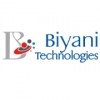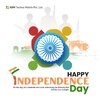
i
Filter interviews by
Jain Digivast Technology And Consulting Interview Questions, Process, and Tips
Jain Digivast Technology And Consulting Interview Experiences
1 interview found
I applied via Company Website and was interviewed in Apr 2024. There were 2 interview rounds.
(4 Questions)
- Q1. Tell me about your self
- Ans.
I am a passionate software engineer with 5 years of experience in developing web applications using Java, Spring, and Angular.
5 years of experience in software development
Proficient in Java, Spring, and Angular
Passionate about creating innovative web applications
- Q2. What are the main principles of oop?
- Ans.
Main principles of OOP include encapsulation, inheritance, and polymorphism.
Encapsulation: Bundling data and methods that operate on the data into a single unit (class).
Inheritance: Allowing a class to inherit properties and behavior from another class.
Polymorphism: Objects of different classes can be treated as objects of a common superclass.
Abstraction: Hiding the complex implementation details and showing only the n...
- Q3. What is spring boot?
- Ans.
Spring Boot is a Java-based framework used to create standalone, production-grade Spring-based applications.
Spring Boot simplifies the process of creating Spring applications by providing a set of pre-configured defaults.
It allows developers to quickly set up and run standalone Spring applications with minimal configuration.
Spring Boot includes embedded servers like Tomcat, Jetty, or Undertow, making it easy to deploy ...
- Q4. What are the checked and unchecked exception
- Ans.
Checked exceptions are checked at compile time, while unchecked exceptions are not.
Checked exceptions must be either caught or declared in the method signature using 'throws'
Unchecked exceptions do not need to be caught or declared
Examples of checked exceptions: IOException, SQLException
Examples of unchecked exceptions: NullPointerException, ArrayIndexOutOfBoundsException
(2 Questions)
- Q1. What is spring boot and how does it different from the framework?
- Ans.
Spring Boot is a framework that simplifies the development of Java applications by providing pre-configured settings and tools.
Spring Boot eliminates the need for manual configuration by providing defaults for most settings.
It allows developers to quickly set up and run standalone Spring-based applications.
Spring Boot includes embedded servers like Tomcat, Jetty, or Undertow, making it easy to deploy applications.
It of...
- Q2. Explain the difference between== and equal() in Java?
- Ans.
In Java, == is used to compare references, while equals() is used to compare values of objects.
== compares references, while equals() compares values
== is used for primitive data types, while equals() is used for objects
Example: String str1 = new String("hello"); String str2 = new String("hello"); str1 == str2 will be false, but str1.equals(str2) will be true
Skills evaluated in this interview
Software Engineer Interview Questions asked at other Companies
Top trending discussions






Interview questions from similar companies

Angular Frontend Developer Interview Questions & Answers
Greenovative Energyposted on 18 Jan 2025
A table must be created using Angular Material or another UI library to demonstrate CRUD operations.
(3 Questions)
- Q1. Angular performance questions? Which one is faster react or angular?
- Q2. Angular Services how to implement it ?
- Ans.
Angular services are used to create reusable code that can be shared across components.
Create a service using the Angular CLI command 'ng generate service serviceName'
Inject the service into components by adding it to the providers array in the component's metadata
Services can be used to share data between components, perform HTTP requests, or handle business logic
Services are singleton instances, meaning there is only...
- Q3. What are the methods for communication between components in Angular? Please elaborate.
- Ans.
Methods for communication between components in Angular include Input and Output properties, ViewChild, Services, and EventEmitters.
Using Input and Output properties to pass data from parent to child components and emit events from child to parent components.
Using ViewChild to access child components and their properties directly from the parent component.
Using Services to create a shared service that can be injected i...

Senior Marketing and Digital Manager Interview Questions & Answers
Seceon Inc.posted on 11 Dec 2024
I applied via LinkedIn and was interviewed in Nov 2024. There were 2 interview rounds.
(3 Questions)
- Q1. How we can promote website in google?
- Ans.
Promote a website on Google by utilizing SEO strategies, Google Ads, creating quality content, and building backlinks.
Optimize website for SEO with relevant keywords and meta tags
Run Google Ads campaigns targeting relevant keywords and audiences
Create high-quality content that is valuable to users and encourages engagement
Build backlinks from reputable websites to improve website authority
- Q2. What is Search Engine Optimization?
- Ans.
SEO is the practice of optimizing websites to improve their visibility and ranking on search engine results pages.
SEO involves keyword research to identify popular search terms
Optimizing website content and structure to improve search engine rankings
Building backlinks from reputable websites to increase credibility
Monitoring and analyzing website traffic and performance using tools like Google Analytics
- Q3. What is Social Media Optimization?
- Ans.
SMO is the process of optimizing social media platforms to increase brand visibility and engagement.
Creating engaging content to attract followers
Using hashtags and keywords to improve discoverability
Interacting with followers through comments and messages
Analyzing data to track performance and make improvements
(1 Question)
- Q1. How we can Improve our ranking in Google?
- Ans.
Improving Google ranking involves optimizing website content, building quality backlinks, and focusing on user experience.
Optimize website content with relevant keywords and meta tags
Build quality backlinks from reputable websites
Focus on improving user experience with fast loading times and mobile optimization
Skills evaluated in this interview

I applied via Naukri.com and was interviewed in Nov 2024. There was 1 interview round.
(1 Question)
- Q1. Write terraform script based on provided info?

I applied via Company Website and was interviewed in Jun 2024. There were 3 interview rounds.
Coding Test consists of 3 Problem Question (2 Logical questions and 1 SQL Query ) and Around 20 MCQS
Platform - CoderByte
30 Aptitude Question
3 Mail Writing Question
(5 Questions)
- Q1. Explain 1st Problem Solved in Coding Test. Optimize it.
- Q2. Explain 2nd Problem Solved in Coding Test. I failed 1 test case in 1st round which was told to solve again.
- Q3. Explain 3rd Question based on SQL Query.
- Q4. Write a code to Reverse Digits.
- Q5. A problem question for solving a SQL Query.
Interview Preparation Tips
Stay continuously in contact, call the HR for updates as they don't call you, We need to call them else you will wait entire life.

Digital Marketing Intern Interview Questions & Answers
Solis Technology Private Limitedposted on 20 Jan 2025
I applied via Indeed and was interviewed in Dec 2024. There was 1 interview round.
(2 Questions)
- Q1. What are the main tasks be as a digital marketer?
- Ans.
Main tasks of a digital marketer include creating and implementing digital marketing strategies, analyzing data, managing social media accounts, and optimizing website content.
Creating and implementing digital marketing strategies
Analyzing data to measure the effectiveness of campaigns
Managing social media accounts and engaging with followers
Optimizing website content for search engines
Conducting market research to ide...
- Q2. Why should we hire you?
- Ans.
I am a highly motivated individual with a strong passion for digital marketing and a proven track record of delivering results.
I have relevant experience in digital marketing through internships and coursework
I am a quick learner and always eager to expand my knowledge and skills
I am creative and have a keen eye for detail, which helps me in creating effective marketing campaigns
I am a team player and can collaborate e...
Interview Preparation Tips
- Digital Marketing
- SEO Analysis
- Social Media Marketing

I applied via Instahyre and was interviewed in Aug 2024. There were 2 interview rounds.
Small assignment to build simple App.
(2 Questions)
- Q1. JavaScript Questions
- Q2. Reactjs Questions
Interview Preparation Tips
- Javascript
- React.Js

I was interviewed in Jul 2024.
(1 Question)
- Q1. Quant questions with the CEO
(1 Question)
- Q1. Project and Product Management related questions - technical questions on project timelines and resource allocation.
(1 Question)
- Q1. Job offer and salary discussions and negotiations.

Mobile Application Developer Interview Questions & Answers
Accucia Softwares Private Limitedposted on 4 Jul 2024
Aptitude test is based on logical questions and small programs
(2 Questions)
- Q1. All basics of core java and whatever you written in resume. ask about the your last projects. difference between then map, array list, collection, set etc.
- Q2. General questions about the andorid studio. ask some logical questions
(1 Question)
- Q1. This will be HR round. general hr questions

(2 Questions)
- Q1. Question Based on Linked List
- Q2. Question based on array
Interview Preparation Tips
Jain Digivast Technology And Consulting Interview FAQs
Tell us how to improve this page.
Interview Questions for Popular Designations
Jain Digivast Technology And Consulting Interview Process
based on 2 interviews
Interview experience
Interview Questions from Similar Companies
Jain Digivast Technology And Consulting Reviews and Ratings
based on 4 reviews
Rating in categories

Velozity Global Solutions

Bhash Software Labs

QR Crypher

Biyani Technologies
- Home >
- Interviews >
- Jain Digivast Technology And Consulting Interview Questions








